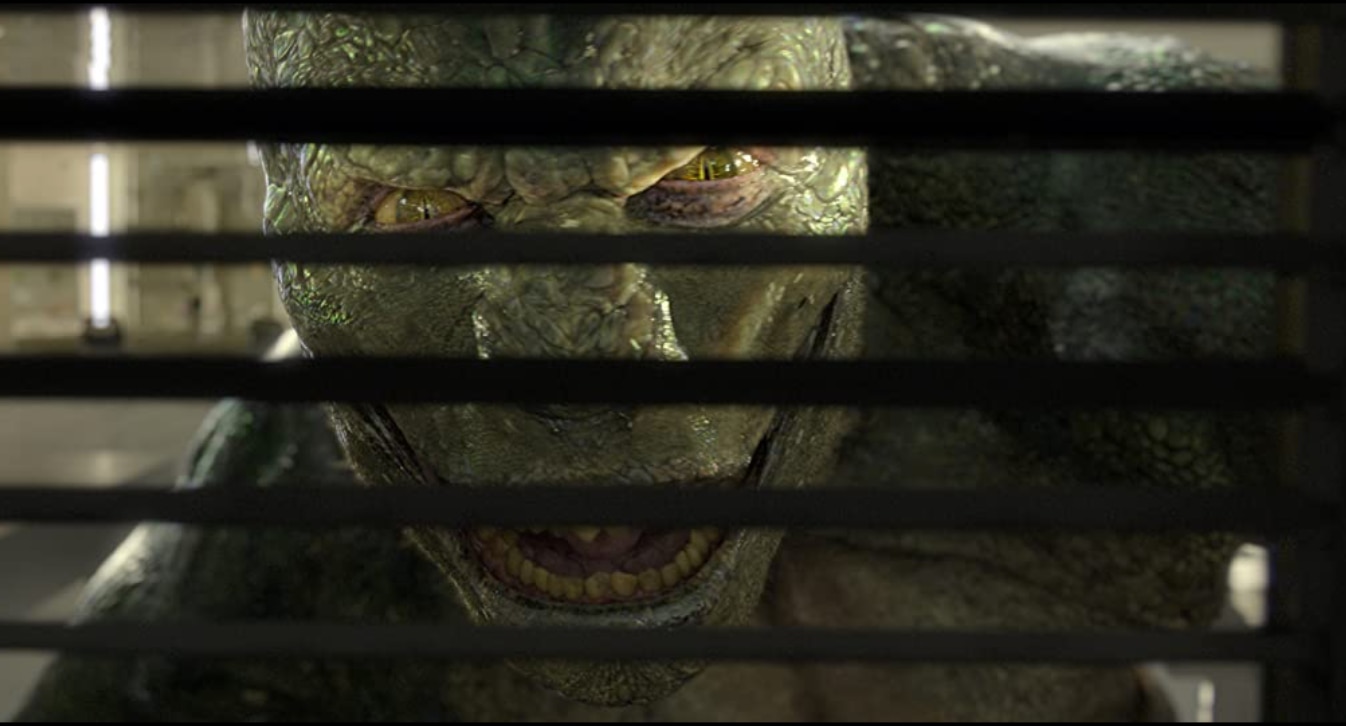Create a free profile to get unlimited access to exclusive videos, sweepstakes, and more!
If gators can regenerate like The Lizard, dinosaurs might have done the same thing because…lizards

Lizards often look like something tasty to predators, but some have evolved an advantage that lets them get away. Their tails will regenerate even if a part is bitten off.
You would think something as fierce as an alligator—the closest we can get to a dinosaur without a time machine—wouldn't need the ability to regenerate its tail for survival. The thing is, sometimes gators do fight each other, and even cannibalize each other. Clashes over territory, a mate or some prime meat could be dangerous, even deadly. Now a team of researchers have found that young alligators who get parts of their tails bitten off over a love triangle or turf war can actually grow them back. No wonder lizards have inspired regenerative abilities in sci-fi.
"This novel finding of partial regeneration of the alligator tail extends the ability to a large, long lived, animal," said biologists Jeanne Wilson-Rawls and Kenro Kusumi of Arizona State University, who recently co-authored a study published in Scientific Reports. "Most animals with regenerative capacity, such as the salamander, are small and short lived. Additionally, the amount of tissue regrown in the alligator is some of the largest among animals. Understanding how regeneration occurs here will help us develop future therapies for human regeneration of tissues after traumatic injuries or in neuromuscular diseases."
If lizards can regrow their tails, and alligators are one of those lizards, could dinosaurs, the most monstrous lizards of them all, pull this off?
Maybe some of them did. Some 250 million years ago, the ancestors of dinosaurs, alligators and birds split from each other. Reptiles are the only amniotes (a vast group of vertebrates that includes humans), which are capable of tail regeneration, though there are other creatures which can regenerate limbs and other parts of their bodies. Dinosaurs are also related to birds, but known birds are capable of regrowing their tails. What sets bird tails apart is that they are mostly feathers (which can regrow apart from anything else), and not much is actually a part of the skeleton. That may or may not be the reason birds never evolved the almost supernatural power of regeneration.
While fossils of dinosaurs with evidence of tail regrowth have not yet emerged, it is possible they are out there somewhere, or that there is evidence which has just not been identified yet. If they really could do this, it wouldn’t be the first time alligators told us something about their extinct brethren.
"So far, we have not found any published reports of dinosaur fossils with what looks like a regenerated tail," Wilson-Rawls and Kusumi said. "In terms of non-dinosaur reptiles at that time, researchers have found fossil evidence of regions of the vertebral bones that aided in tail self-amputation in both captorhinids and mesosaurs of the Permian, indicating that they may have purposely shed their tails to avoid predation. However, if they did regenerate their tails, we would predict that they would replace the bony elements with cartilage, and you would see the outline of the regrown tail without evidence of bony skeleton inside."
There is a difference between the structure of the original tail and the regrown part of that tail in alligators. In the regenerated part of the skeleton, the spinal bones are replacd with a cartilage tube, inside which are axons, or the long parts of nerve cells that send messages to other cells, and the membrane of cells surrounding the spinal cord, which is known as the ependyma. Regeneration doesn’t generate any new neurons. The way regenerated skeletal muscle grows is also somewhat random. If this happened in some species of dinosaurs, cartilage and muscle do not fossilize well, which could be why there has been no evidence of tail regeneration found in specimens that are tens to hundreds of millions of years old.
“We used MRI scans and X-rays to examine regrown tails and found that the vertebrae were damaged. Beyond that point, there was a structure that was tubular but not bone," Wilson-Rawls and Kusumi said. "We then dissected the tails and found that this was cartilage. During dissections, we noticed a lack of skeletal muscle.”
What especially stood out was that not only can alligators regenerate their tails while they are young enough, but the wound actually heals at the same time. Regrowth can give them an advantage in the rivers and swamps where they live. An alligator’s tail is long and powerful to help it steer as it swims through the murk. They may look like they are just hanging out with their eyes barely above water most of the time, but gators can really bring it when they need to go after prey or get away from an enemy gator. They tuck their legs underneath their bodies and lash their tails back and forth. Permanently losing part of that tail would slow them down.
The regenerative abilities of alligators may mean a new frontier in medical treatments for humans. Mammals are thought to have lost most regenerative abilities they may have had because it did nothing for them, or because it was a trade-off for functions that were needed more. Wilson-Rawls and Kusumi have seen examples of regrowth in humans, but we don't have reptile-level power. Yet.
"There are examples of regeneration in mammals, but what we aren’t capable of would be the robust regeneration of a complete limb, or regeneration after volumetric muscle loss," they said. "I think the difference in regenerative ability is likely not due to more than one reason reason. There are differences in immune responses, that predispose a fibrotic repair response in mammals instead of regeneration. There are also changes in gene regulation that limit the ability to re-activate cells to proliferate in order to rebuild missing tissues. There are many people that are actively trying to understand these factors."
Making the connection between what remains in reptiles and what was lost in humans may eventually give us their superpowers.














